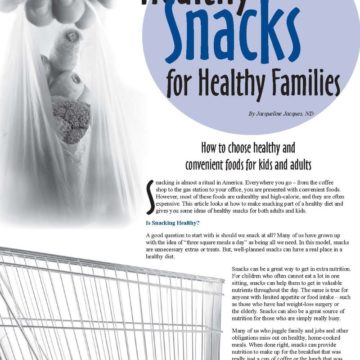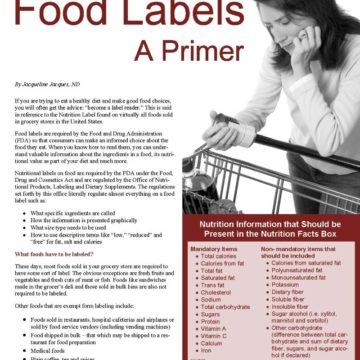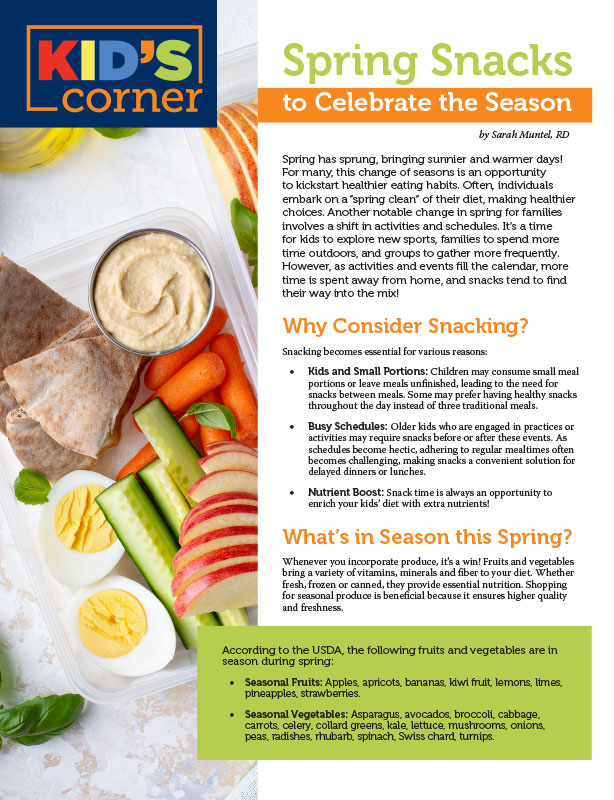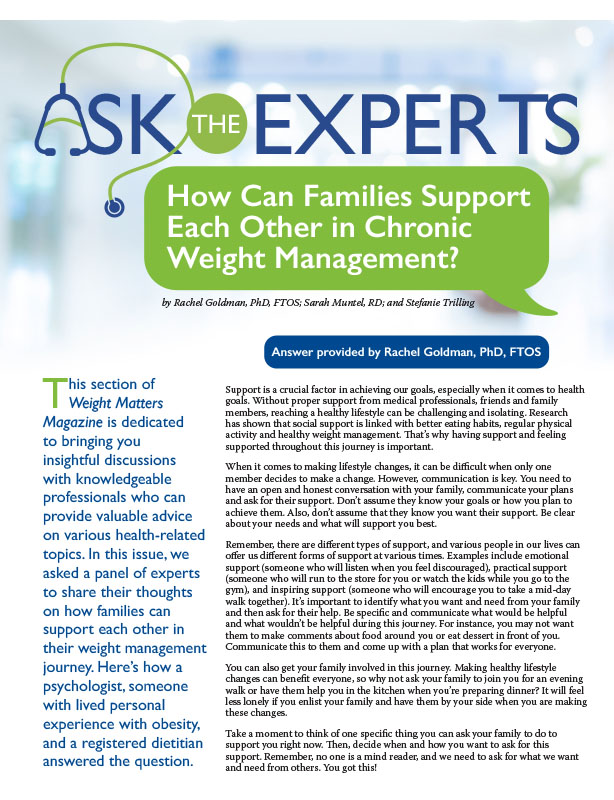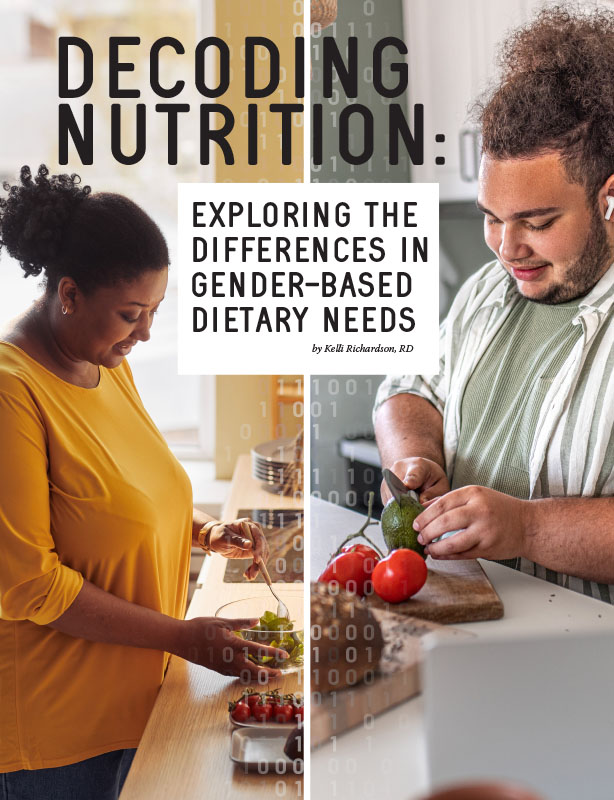Top 10 Facts about Food Choices

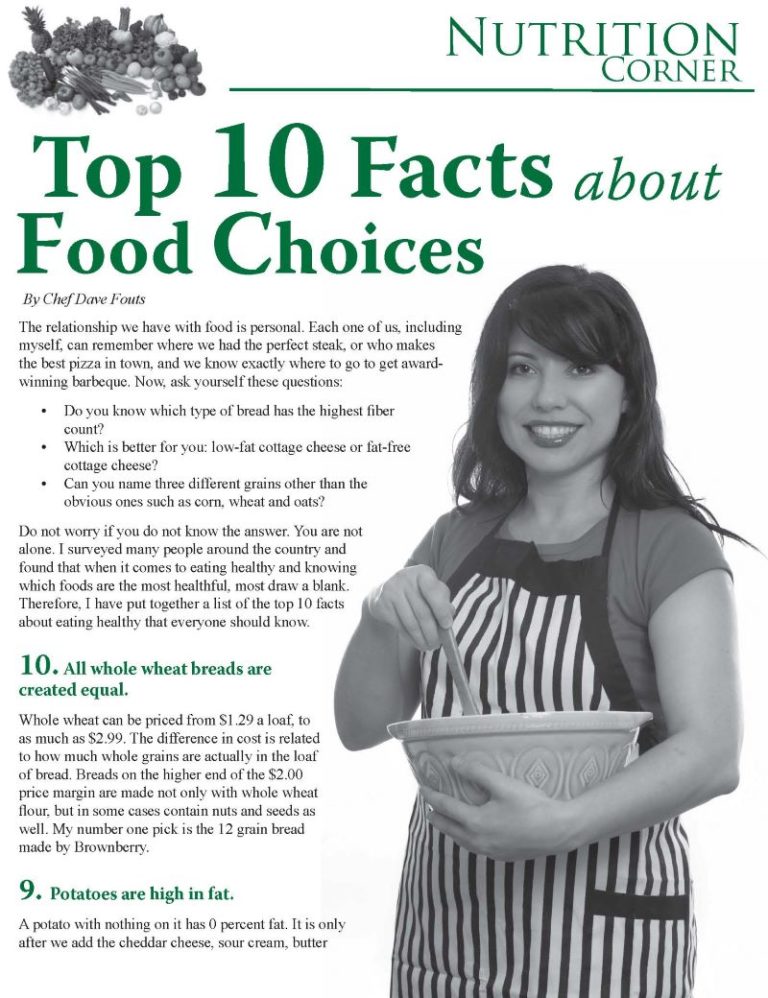
by Chef Dave Fouts
Summer 2007
The relationship we have with food is personal. Each one of us, including myself, can remember where we had the perfect steak, or who makes the best pizza in town, and we know exactly where to go to get award-winning barbeque. Now, ask yourself these questions:
- Do you know which type of bread has the highest fiber count?
- Which is better for you: low-fat cottage cheese or fat-free cottage cheese?
- Can you name three different grains other than the obvious ones such as corn, wheat and oats?
Do not worry if you do not know the answer. You are not alone. I surveyed many people around the country and found that when it comes to eating healthy and knowing which foods are the most healthful, most draw a blank. Therefore, I have put together a list of the top 10 facts about eating healthy that everyone should know.
10. All whole wheat breads are created equal.
Whole wheat can be priced from $1.29 a loaf, to as much as $2.99. The difference in cost is related to how much whole grains are actually in the loaf of bread. Breads on the higher end of the $2.00 price margin are made not only with whole wheat flour, but in some cases contain nuts and seeds as well. My number one pick is the 12 grain bread made by Brownberry.
9. Potatoes are high in fat.
A potato with nothing on it has 0 percent fat. It is only after we add the cheddar cheese, sour cream, butter and bacon bits that it becomes a nightmare food. When making mashed potatoes, use low sodium chicken or beef broth instead of milk. In addition, add fresh chopped herbs and in an instant, you have a low fat side. Also, let us not forget the sweet potato. Placing them in a 350 degree oven for one to one and a half hours with the skins on will let their natural sugar caramelize inside the sweet potato. Peel back the skin and sprinkle with a dash of cinnamon, and serve.
8. All deli meats are created equal.
Deli meats are convenient, but stay away from processed meats. Choose deli meats such as ham, turkey, top round roast beef and corned beef. These are all cuts from the animal and are processed the least. Lunch meats such as salami, bologna and pepperoni are processed more; therefore, eat these meats less often.
7. Cottage cheese: fat-free or low-fat.
Let’s talk fat for a minute. Fat not only gives more flavor to food, but it also adds moisture. When fat is removed, another product is generally put in its place. In most cases, sugar is added. In baking, sugar is counted as a liquid ingredient, because once heated, it turns to liquid. Sugar not only sweetens a food, but also aids in keeping food moist. Fat-free cottage cheese contains no fat, so sugar is usually what replaces the fat. In low-fat cottage cheese, however, only a majority of the fat is removed, but enough is left to maintain moisture and flavor. So, if you are watching fat, I suggest fat-free, and if sugar is the culprit, go with the low-fat.
6. All the hype about trans-fat.
Wikipedia defines trans-fat as: “Unlike other fats, trans-fats are neither required nor beneficial for health.[1] Eating trans-fats increases the risk of coronary heart disease.[2] For these reasons, health authorities worldwide recommend that consumption of trans-fat be reduced to trace amounts.” Trans-fats were first used commercially in the 1900’s in Crisco. In addition, trans-fats are used to extend the shelf life of products because they have a much higher meting point and reduced tendencies for oxidation (when oxygen is introduced to food, the breakdown of food starts). Trans-fats have NO nutritional value and in addition can cause bodily harm. Therefore, I recommend to only buy foods that are trans-fat free.
5. Five golden delicious, make your mouth water. Onion rings are good for me if fried in healthy oils.
Healthy oils such as corn, canola, safflower and olive oil are good if used in moderation, but when foods are fried in them they normally have the crunchy coating attached. Not only does this crispy coating absorb some of the oil, it puts enough fat in your diet for the whole day. Remember, no more than 30 percent of your calories should come from fat.
4. Do canned meats have the same amount of protein as their fresh counter parts do?
Canned meats such as chicken and tuna fish, and seafood such as crab and shrimp are all good sources of protein. Canned meats are helpful for when you are in a rush or on days you are not sure when a break will come your way. There is never a substitution for the real thing, but in a crunch, reach for a can of water-packed tuna. Deviled hams, Vienna sausage and other processed meats are much lower in protein, contain fillers and if eaten should be done only sparingly.
3. Use fresh pre-cut vegetables and fruit to help in meal preparations.
Pre-cut vegetables and fruits may cost more, but it is one of the fastest growing industries in fresh food production. These already-cut vegetables and fruits can make most recipes quick, ready in less than 15 minutes. Most local grocery markets cut their own produce daily and have everything from chopped tomatoes to diced bell peppers in their refrigerated case. In addition, check your deli and produce sections for already prepared fresh fruit salads and take home salads. The shelf life of pre-cut fresh fruits and vegetables is normally half than if left whole and uncut. So when you buy them, use them.
2. If a recipe call’s for alcohol, do I have to use it?
Absolutely not! Alcohol is added to give the dish a unique flavor, but if you as the cook choose not to use alcohol then be sure to substitute with another liquid that has flavor. For chicken dishes, use chicken stock, for beef dishes use beef stock and for fish or seafood use vegetable broth or chicken stock. In addition, if you are using alcohol, do not use cooking wine. This type of wine is almost vinegar. As a rule, if you will not drink it, do not use it in cooking.
1. Be your own chef!
Instead of looking for a recipe where every ingredient fits your preference, think of a recipe as a guide. If you do not like asparagus, change it to broccoli. If the recipe you are interested in contains shrimp and you are allergic, change it to fish or chicken. The amazing part about cooking is that the possibilities are endless.
*Tip: Instead of deep-frying or pan-frying your food, try to oven fry your food and coat it on your own. Use a low-fat pan spray and generously spay your pan. Next, use an egg white wash (one egg white to one teaspoon of water) and dip your food into the wash to coat your food evenly. Next, sprinkle with your favorite dry ingredients, using dried herbs, spices and a small amount of bread crumbs or flour for crunch. In a preheated 350 degree oven, spread your coated food onto a single layer and bake. Some thicker foods like chicken and fish will need to be turned halfway through.
About the Author:
Chef Dave Fouts is known as the world’s premier culinary expert for Weight Loss Surgical Patients. Chef Dave can be found speaking around the country on the importance of Culinary techniques and cooking methods to ensure the weight loss patient’s success. For more information please visit www.chefdave.org.
by Sarah Muntel, RD Spring 2024 Spring has sprung, bringing sunnier and warmer days! For many, this…
Read Articleby Rachel Goldman, PhD, FTOS; Sarah Muntel, RD; and Stefanie Trilling Winter 2024 This section of Weight…
Read Articleby Kelli Richardson, RD You’ve probably heard the generic advice before: Eat your fruits and veggies. Limit…
Read Article




